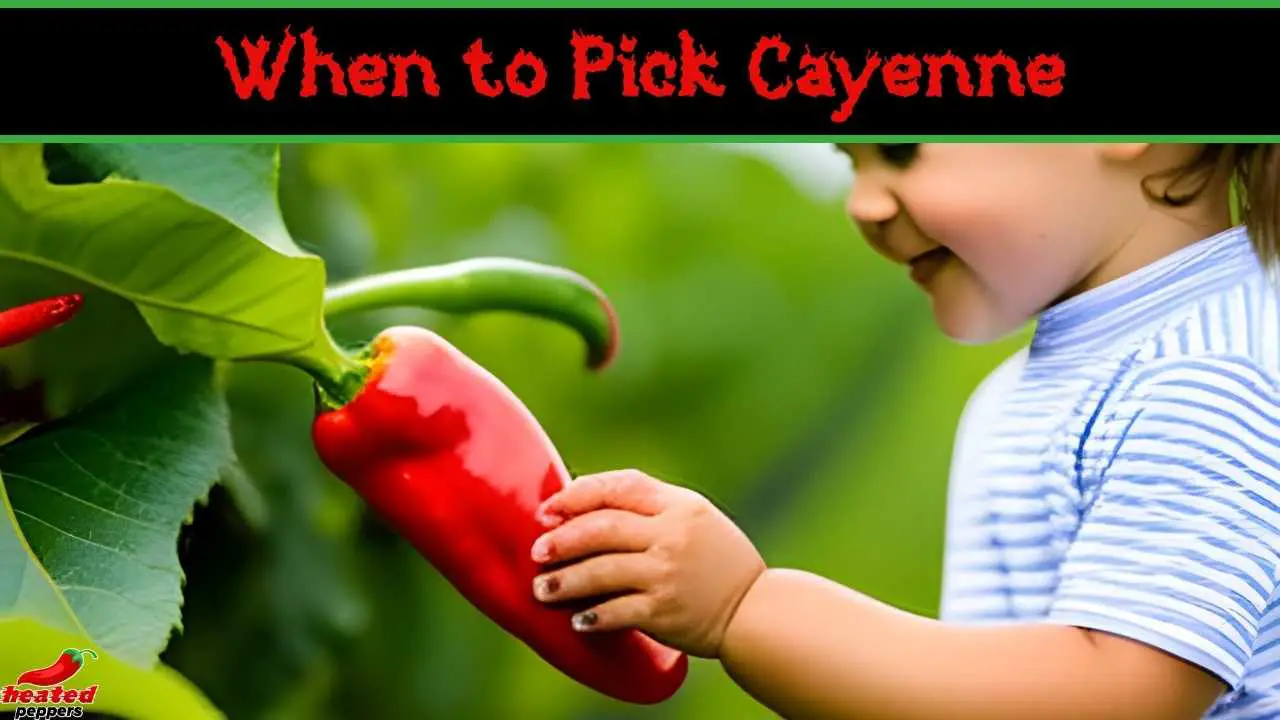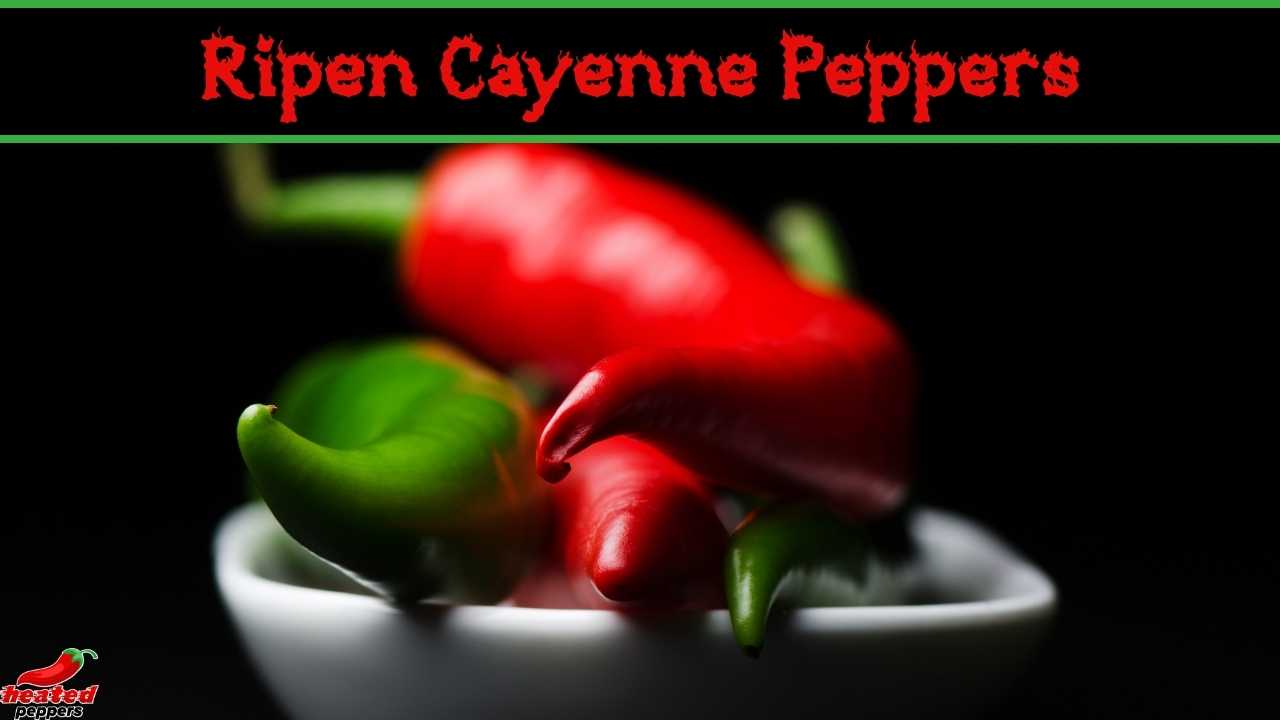Cayenne pepper plants can fall prey to a tiny yet formidable adversary: aphids.
These seemingly innocuous insects, also known as plant lice, possess the ability to wreak havoc on your beloved pepper plants, compromising their health and potentially decimating your harvest.
As a dedicated gardener, understanding the complex relationship between aphids and cayenne pepper plants is crucial to preserving the vitality and productivity of your garden.

Table of Contents
What are Aphids?
Aphids are minuscule insects that feed on plant sap. Despite their small size, aphids can multiply rapidly and cause considerable damage to plants.
Aphid Lifecycle
- Egg Stage: Aphid reproduction begins with the egg stage. These eggs can overwinter on plant material, leading to early infestations in the growing season.
- Nymph Stage: Nymphs hatch from eggs and resemble smaller versions of adults. They undergo several molts before reaching adulthood.
- Adult Stage: Adult aphids are reproductive and continue to produce nymphs. They are usually wingless but can give birth to winged individuals when conditions become crowded.
- Winged Adult Stage: Winged adults, also known as alates, develop in response to overcrowding or unfavorable conditions. They have the ability to disperse and establish new colonies.
Common Aphid Species Affecting Cayenne Pepper
- Green Peach Aphid (Myzus persicae): Identified by its pale green color, this aphid can transmit viruses and cause stunted growth in cayenne pepper plants.
- Aphids (Aphis spp.): These tiny insects are notorious for their rapid reproduction and colonization of new plant growth.
- Cabbage Aphid (Brevicoryne brassicae): Despite its name, this aphid species can infest various plant types, including cayenne pepper. It’s recognized by its pale gray-green color.
How to Detect Aphid Infestations
Signs of Aphid Damage
Aphids leave behind clear indicators of their presence and the havoc they create on your cayenne pepper plants.
One common sign is the curling of leaves, a result of their feeding behavior that turns your plant’s foliage into protective shelters for these tiny invaders.
Beyond this, the growth of your cayenne pepper plants might be stunted, hindered by the relentless appetite of these aphids as they sap essential nutrients and introduce stress.
Adding insult to injury, aphids secrete a sticky substance known as honeydew, which may sound harmless but can attract mold and other pests, compromising the health of your plants.
Additionally, their feeding can lead to distorted or twisted new growth, altering the normal development of your pepper plants.
To summarize, Aphid damage includes:
- Leaf Curling
- Stunted Growth
- Honeydew Residue
- Distorted Plant Parts
Visual Inspection
Conduct a thorough visual inspection of your cayenne pepper plants to catch aphid presence early.
Check upper and lower leaf surfaces for aphids, nymphs, and shed exoskeletons. Don’t forget to examine buds and stems, where aphids often gather.
Detecting aphids at the start enables prompt action to protect your plants.
Long-Term Prevention Strategies
Beneficial Insects and Natural Predators
Beneficial insects and natural predators play a vital role in maintaining a healthy balance in your garden ecosystem.
Ladybug:
One of the most well-known aphid predators is the ladybug, also known as Coccinellidae. These charming red-and-black insects have a hearty appetite for aphids and can make a significant dent in their population.
To invite ladybugs into your garden, consider planting a variety of pollen and nectar-rich flowers that serve as attractive feeding sources.
Lacewing:
Another valuable ally in the fight against aphids is the lacewing, a delicate and graceful insect from the Chrysopidae family.
Lacewing larvae are particularly skilled aphid hunters, devouring these tiny pests with gusto. To create a welcoming environment for lacewings, introduce plants like dill, fennel, and marigold to your garden.
These plants not only provide a habitat for lacewings but also offer additional benefits to your garden’s overall health.
Buying Option vs Natural Approach:
The cost of purchasing beneficial insects like ladybugs and lacewings can vary depending on factors such as the quantity you need and the supplier you choose.
On average, a bag of ladybugs containing around 1,500 to 2,000 insects might cost between $10 to $15, while lacewings could be priced similarly. However, prices may fluctuate based on availability and demand.
When I had an aphid infestation, I purchased this bag of ladybugs on Amazon and within a week my aphid problems were over!
These beneficial insects can also be purchased from local garden centers, nurseries, or other online retailers that specialize in natural pest control solutions.
However, while attracting ladybugs, lacewings, and other beneficial insects naturally might take a bit more time and effort, the benefits often outweigh those of purchasing and releasing them.
When you encourage these insects to visit your garden naturally, you’re fostering a more sustainable and resilient ecosystem. Attracting beneficial insects naturally promotes long-term pest control.
By planting a diverse array of flowering plants, you provide not only food sources but also suitable habitats for these insects to thrive. This encourages them to establish themselves in your garden, creating a self-sustaining cycle of pest control.
Moreover, naturally attracting beneficial insects contributes to overall biodiversity in your garden, leading to a healthier and more vibrant ecosystem and reducing the need for repeated interventions.

Cultural Practices
- Crop Rotation: Prevent aphid buildup by rotating cayenne pepper crops and their relatives to different areas each year.
- Companion Planting: Plant aphid-repellent companions like alyssum, catnip, chives, garlic, mint, marigold, and sunflowers alongside cayenne pepper plants.
- Proper Spacing: Adequate spacing between plants promotes air circulation, reducing conditions favorable for aphid infestations.
- Maintain Soil Health: Healthy soil encourages robust plant growth, making cayenne pepper plants less susceptible to aphid attacks.
6 Quick Methods to Combat Aphids
1. Manual Removal
Manual removal is an effective method for dealing with aphid infestations.
Start by trimming affected leaves and stems to get rid of heavy aphid populations.
For smaller infestations, simply rub the aphids off the plant by hand, gently removing them to help bring the situation under control.
2. Water Spray
Water spray serves as an effective method for dislodging aphids from your cayenne pepper plants.
By directing a forceful stream of water onto the affected plants, particularly focusing on the undersides of leaves where aphids tend to hide, you can physically remove these pests.
Consistency is key with this approach – applying the water spray treatment every few days helps disrupt aphid populations over time, gradually reducing their numbers and minimizing their impact on your plants.
3. Insecticidal Soap
Insecticidal soap presents a targeted and eco-friendly option for addressing aphid infestations on your cayenne pepper plants.
You have two main avenues to consider: crafting your own solution or opting for commercial products.
Homemade Solution:
Crafting your own insecticidal soap is relatively simple. Start by preparing a solution using mild dish soap and water.
Mix a small amount of mild dish soap – preferably one without harsh additives – with water to create a diluted soapy mixture.
Once prepared, apply the solution directly to the aphids, making sure to cover both sides of the leaves and other affected areas thoroughly.
The soap disrupts the aphids’ outer cell membranes, leading to dehydration and eventually their demise. This method offers a natural and cost-effective way to control aphid populations.
Commercial Options:
- Safer Brand Insect Killing Soap: This widely available option is formulated to target aphids, mites, and other soft-bodied insects. It offers a gentle and biodegradable solution that won’t harm beneficial insects, pets, or humans.
- Bonide Insecticidal Soap: Bonide offers a range of insecticidal soap products designed to tackle aphids, mealybugs, whiteflies, and other pests. These ready-to-use sprays can be conveniently applied to both indoor and outdoor plants.
- Garden Safe Insecticidal Soap: Garden Safe’s insecticidal soap is formulated to control aphids, mites, and other insects that harm your plants. It’s suitable for use on edibles and ornamentals, making it a versatile option for cayenne pepper plants in your garden.
- Monterey Insecticidal Soap: Monterey offers a concentrated insecticidal soap solution that can be diluted and applied to effectively manage aphids. The concentrated formula provides excellent coverage and is designed to break down quickly in the environment.
- Espoma Earth-tone Insecticidal Soap: This insecticidal soap is designed to target aphids, mites, and other pests while being gentle on your plants. It’s OMRI-listed for organic gardening and provides an environmentally friendly solution for aphid control.
4 .Essential Oils
Utilizing essential oils is a natural and aromatic method to deter aphids on your cayenne pepper plants.
Peppermint oil, diluted with water and applied as a spray, emits a potent scent that repels aphids.
Other essential oils like rosemary, clove, and eucalyptus can also be diluted and used similarly to create a protective barrier against these pests.
Apply the spray strategically and periodically for enhanced pest management, being mindful of potential sensitivities and interactions.
5. Commercial Pesticides
When considering commercial pesticides for aphid control, it’s crucial to make informed choices:
- Label Guidelines: Opt for pesticides explicitly labeled for aphid control on pepper plants. Reading and following the provided instructions and safety precautions is paramount.
- Pyrethrin-based Sprays: Consider pyrethrin-based sprays, which effectively target aphids while posing lower risks to beneficial insects. Pyrethrin, derived from chrysanthemum flowers, paralyzes aphids on contact, allowing other insects to prey on them without harm.
Here are a few options:
- Bonide Pyrethrin Garden Insect Spray: This pyrethrin-based insecticide targets aphids while minimizing harm to beneficial insects. It’s suitable for organic gardening and can be applied directly to affected plants.
- Ortho Flower, Fruit & Vegetable Insect Killer: Designed for use on a variety of edible plants, this spray tackles aphids and other pests. It provides systemic protection by being absorbed into the plant, making it less appealing to aphids.
- Bayer Advanced 3-in-1 Insect, Disease & Mite Control: This versatile product targets aphids, as well as other common pests and diseases. It comes in a ready-to-use formula and can protect your cayenne pepper plants from multiple threats.
- Monterey Garden Insect Spray: With spinosad as its active ingredient, this spray effectively controls aphids while having minimal impact on beneficial insects. It’s a suitable choice for organic gardening.
6. Neem Oil
Neem oil’s potency lies in its active compounds that interfere with aphids’ life cycle.
When neem oil comes into contact with aphids, it disrupts their ability to feed by affecting their feeding behavior and inhibiting their mouthparts from puncturing plant tissues.
This disrupts their nutrient absorption process, weakening them over time.
Additionally, neem oil contains azadirachtin, a natural insect growth regulator, which interferes with aphid molting and reproductive processes.
This disrupts their lifecycle progression, reducing their ability to reproduce and infest your cayenne pepper plants.
As a result, the combination of these effects not only limits aphid populations but also helps prevent new infestations, providing comprehensive protection for your plants.
Future Prevention and Maintenance

Regular Monitoring:
- Routine Check-ups: Continue routine inspections even after managing aphid infestations to catch new outbreaks early.
- Monitor Weather Conditions: Favorable conditions, such as warm temperatures and low humidity, can lead to aphid resurgence.
Soil Health and Fertilization:
- Balanced Soil: Maintain optimal soil health through proper pH, nutrient levels, and organic matter content.
- Fertilization Strategy: Apply balanced fertilizer to ensure plants receive essential nutrients for vigorous growth.
Mulching and Pruning:
- Mulching Benefits: Apply organic mulch to conserve soil moisture, prevent weed growth, and provide a barrier against aphid migration.
- Pruning for Airflow: Regularly prune crowded foliage to improve air circulation and create an environment less conducive to aphids.
Conclusion
Gardening enthusiasts know the struggle posed by aphids on cayenne pepper plants, but with the right strategies, you can protect your harvest.
Regular inspections and the assistance of beneficial insects can help manage aphid populations naturally.
Employ preventive methods such as companion planting and attracting natural predators, while also considering organic remedies like water sprays, insecticidal soaps, and essential oils.
By combining these approaches, you’ll be well-equipped to nurture flourishing cayenne pepper plants and savor the rewards they bring to your garden and table.





